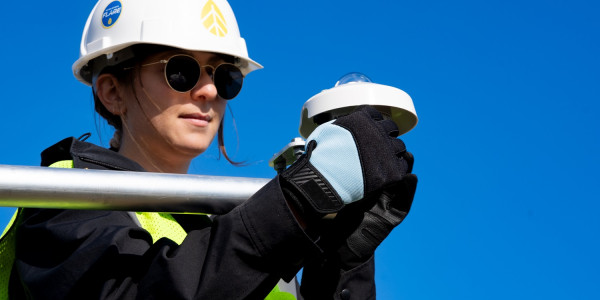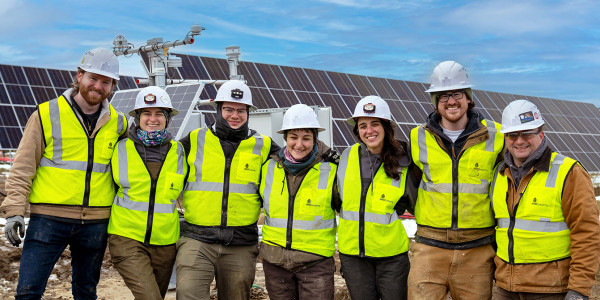April 5, 2011 | Climate Change, Energy Policy, Sustainability + Energy,
Remembering Fall 2010
Late last fall at the AWEA Fall Symposium, I had the fortune to hear former Secretary of State General Colin Powell’s plenary address. He was terrific — insightful, witty and articulate. I appreciated his interest in wind power, his understanding that the industry was going beyond just generating electricity from wind and was thinking more broadly about economics, the environment, and bringing safe, reliable and affordable electricity to the rest of the world.
 General Powell also offered that the United States needs long-term clarity regarding energy policy. If we had that, the market would take care of itself. To do this, he suggested, we need to push back on politicians, have people stand up and not just go with what is popular – we need leaders.
General Powell also offered that the United States needs long-term clarity regarding energy policy. If we had that, the market would take care of itself. To do this, he suggested, we need to push back on politicians, have people stand up and not just go with what is popular – we need leaders.
Fast Forward to Spring 2011
Two weeks ago I was in Brussels attending the European Wind Energy Association’s 2011 event and the message was similar – In order for the economy and ecology to work together, we need to set long-term goals for reducing greenhouse gas emissions (GHG) and then make policies to support the plans to achieve these goals.
We may know what the solutions are, but the wind industry cannot make the necessary changes on its own. We need to join forces with the policy makers in office. The problem is long-term policy is difficult to put in place because many policy makers do not understand the implications of what it is they are being asked to act upon. They have a difficult time understanding what a target of 20% reduction in GHG by 2020 actually means. What infrastructure already in place has to go and what new infrastructure needs to be built to realize the goal? While 2020 is far away in terms of politics, it is today in the realm of the energy production arena. In Europe, for example, it means phasing out all coal plants by 2025. New coal plants cannot be built now because they will still be on line and contributing to the problem and polluting in 2050!
What to Do
So what are we to do? I am hardly a policy wonk, but after years in the wind industry I’ve seen a consensus emerge about two needed changes.
- Establish long-term policies - In the United States our policies on energy seem to span twelve to thirty month timeframes. That is simply not adequate to support new investment today in future electricity generation infrastructure by energy companies. Policy that has a ten-year horizon would be more effective, and one that had a rolling ten-year horizon instead of a renewal every ten years would be even better.
- Enable pricing that is transparent and predictable - Having a portfolio of wind and natural gas helps keep the overall price of electricity lower and helps remove the vagaries of fluctuating gas prices. However, energy policy should not encourage one solution over another through unequal subsidies. Subsidies need to be equalized to account for the environmental and GHG differentials between energy sources. Removing the subsidies in place for conventional fuels would help level the playing field. Additionally, being more flexible with new technologies and subsidies would give renewable energy sources the potential to become cheaper while fossil fuels increase in price.
Vision and Action
Pioneers envision the future but it may not be easy for others to see how that vision can become reality. Getting there requires the work of more than any single individual, it takes dedicated teamwork — the foresight of government, industry and individuals working together. And the wind industry’s first priority should be helping to educate policymakers—not lobbying in a short-term, self-interested way—but in a way that helps others see the pressing need for a long-term view, of thinking beyond tomorrow.
Photo credit:
Future Tense, by Kevin Dooley, via Flickr. Creative Commons license 2.0





